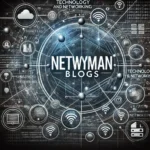When you dive into the networking or web development world, you’ll likely come across IP addresses, ports, and the ever-important concept of “localhost.” One of the most common IP addresses in this context is 127.0.0.1, the loopback address. While 127.0.0.1 is well-known for pointing to the local host, sometimes it is accompanied by a specific port, like 127.0.0.1:49342. But what exactly does this mean? Let’s explore this in detail.
What is 127.0.0.1?
Before understanding 127.0.0.1:49342, it’s essential to break it down. The IP address 127.0.0.1 refers to your local machine, computer, or device. It’s a default address known as a loopback IP. When you or a program refers to this address, you’re not communicating over the Internet or an external network—you’re simply communicating with your device.
For instance, developers use 127.0.0.1 to test their web servers, ensuring their configurations work locally before launching them to the public. This testing environment avoids interaction with external factors and isolates development in a safe space.
What is a Port, and Why is 49342 Important?
Now, let’s talk about ports. Ports are numerical labels used in networking to direct traffic to specific services or applications on a device. For example, when you type 127.0.0.1:49342 into your browser, you tell your device to use 127.0.0.1 (your local host) and connect to a service running on port 49342.
Port numbers range from 0 to 65535, and they help your system know which specific application or process to interact with. The port 49342 is dynamically allocated and is generally associated with temporary or short-lived sessions known as ephemeral ports. These ports are often used when your computer or a program on your system needs to establish a temporary connection, such as for communication with a server or another service.
What is 127.0.0.1:49342 Used For?
When you see 127.0.0.1:49342, it signifies that an application on your machine uses the loopback IP and communicates through port 49342. This is typically part of testing or internal communications where data does not leave your local network.
For developers, this setup might indicate the following:
- Local web development testing: A web server running on your machine uses this port to serve local versions of websites or web applications.
- Network diagnostics: Running diagnostic tools or network analyzers often relies on local hosts and specific ports.
- Internal application communication: Some software may use these ports to communicate between services on your machine without needing to access an external network.
Understanding the Role of Loopback in Networking
The loopback address, represented by 127.0.0.1, is pivotal in networking. Its primary function is to route traffic back to the same machine rather than over the Internet. For example, when your browser sends a request to 127.0.0.1:49342, it talks to a server running on your computer via port 49342.
This setup is invaluable for developers. When working on projects involving web services, they can simulate how an application would behave in a real-world scenario without internet access. Instead of risking live data or interfering with user experiences, the loopback address ensures that all testing remains local, self-contained, and private.
Benefits of Using 127.0.0.1:49342
Developers and network engineers use 127.0.0.1:49342 for several reasons, especially during testing and debugging:
- Enhanced Privacy and Security: Since all communication remains within the local machine, there’s no risk of exposing sensitive data to the outside world.
- Reliable Testing Environment: Developers can test applications locally, ensuring they behave as expected before deployment.
- Simplified Setup: No need to configure complex network settings or access remote servers when testing locally.
- Faster Feedback: Since all traffic is local, responses from applications are immediate, allowing developers to detect issues quickly.
Common Issues and Troubleshooting 127.0.0.1:49342
Even though 127.0.0.1:49342 is often used for local testing, issues can still arise. Here are some common problems and troubleshooting tips:
- Port Conflicts: If multiple applications try to use the same port, you might encounter errors. Ensure no other application is using port 49342. If conflicts occur, consider assigning a different port.
- Firewall Settings: In some cases, a firewall may block specific ports. Although 127.0.0.1 traffic is typically internal, firewalls could still interfere. Check your firewall settings if you encounter any issues.
- Application Crashes: If the application serving on port 49342 crashes or stops unexpectedly, you won’t be able to access it. Ensure the service is running correctly.
- Configuration Errors: Double-check your application’s configuration files to ensure that it’s set to use 127.0.0.1:49342 properly.
The Importance of Localhost and Port Testing in Web Development
Testing locally on 127.0.0.1 with a specific port like 49342 is standard practice in web development. It’s a safe way to ensure that your application, whether a website or a complex server program, behaves as expected before going live. Here are some key reasons why developers rely heavily on this type of setup:
- Isolation from External Networks: No external factors can affect local testing environments.
- No Internet Required: You can develop and test without Internet connectivity, which is especially useful in closed environments or during server outages.
- Increased Control: Local testing gives you complete control over all variables and configurations, ensuring accuracy before deployment.
Advanced Usage of 127.0.0.1:49342 in DevOps
For advanced users in DevOps, 127.0.0.1:49342 might also be used in containerization and virtualization environments. Tools like Docker often rely on local host addresses for service-to-service communication. In a microservices architecture, several services running on the same machine might communicate through ports like 49342 to simulate real-world behaviour. This helps build, test, and deploy complex applications where services need to interact seamlessly.
FAQs
1. What does 127.0.0.1:49342 signify? It refers to a local service running on your machine (127.0.0.1) using port 49342 for communication. It’s typically used for internal development or testing purposes.
2. Why is port 49342 used? Port 49342 is ephemeral, usually chosen dynamically for temporary communication between applications and services running locally.
3. Can I access 127.0.0.1:49342 from another device? No, 127.0.0.1 is a loopback address that only works on the machine it’s running on. It cannot be accessed from outside the device.
4. How do I resolve port conflicts on 127.0.0.1:49342? Check which application uses the port and either stop the conflicting service or assign a different port.
5. Is using 127.0.0.1:49342 safe? Yes, since all communications via 127.0.0.1 are internal, they do not expose data to external networks.
6. Can I change the port from 49342 to something else? Yes, most applications allow you to specify a custom port if 49342 conflicts with another service.
Conclusion
In summary, 127.0.0.1:49342 is a local network address used primarily for testing and development purposes. It allows developers to run services on their machines and interact with them without needing external network access. This combination of the loopback IP and a dynamically assigned port like 49342 is essential for troubleshooting, development, and ensuring applications function as intended before deployment. Whether you’re working on a simple website or a complex microservices application, understanding how 127.0.0.1:49342 works is critical to mastering local network testing.










